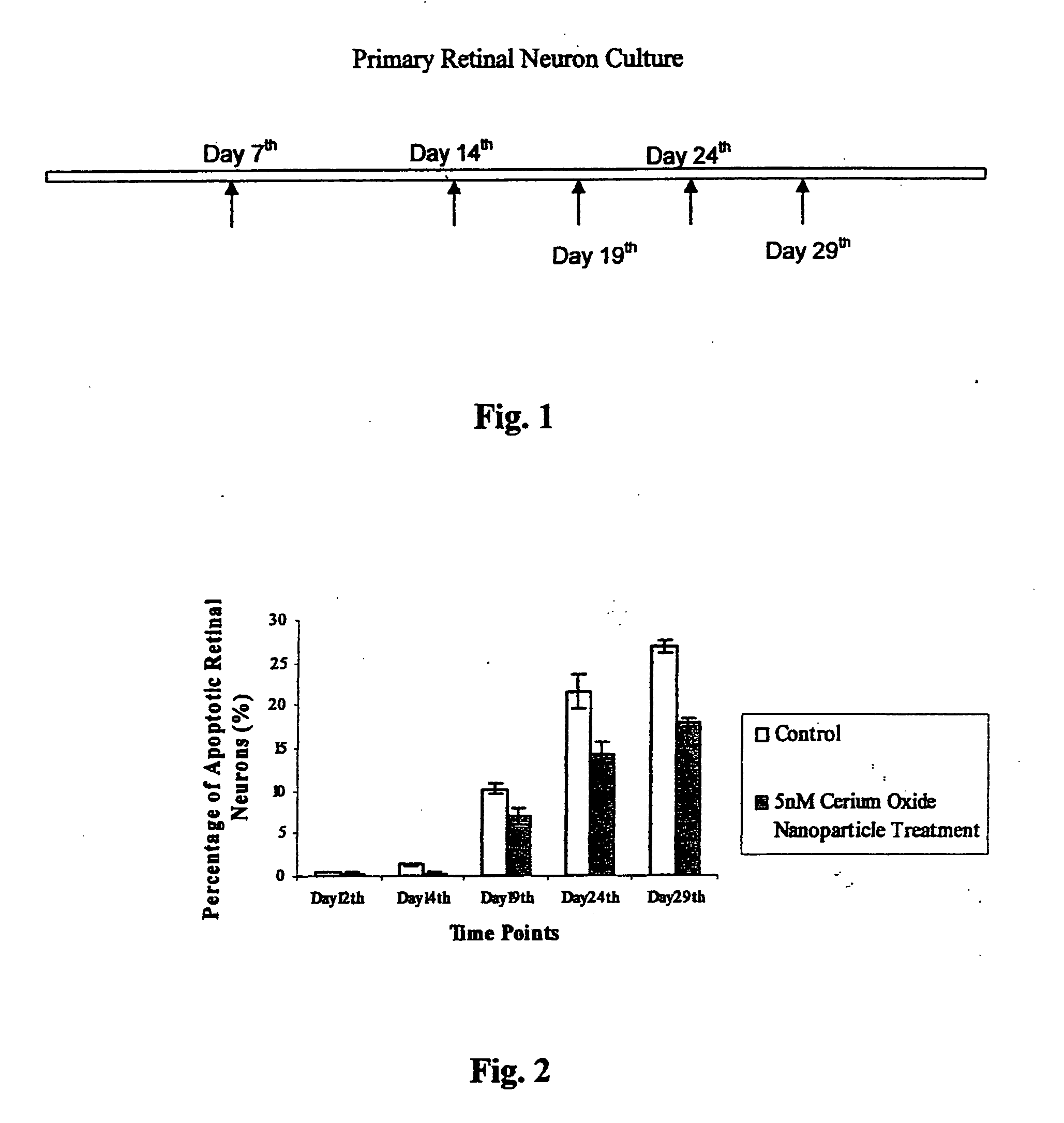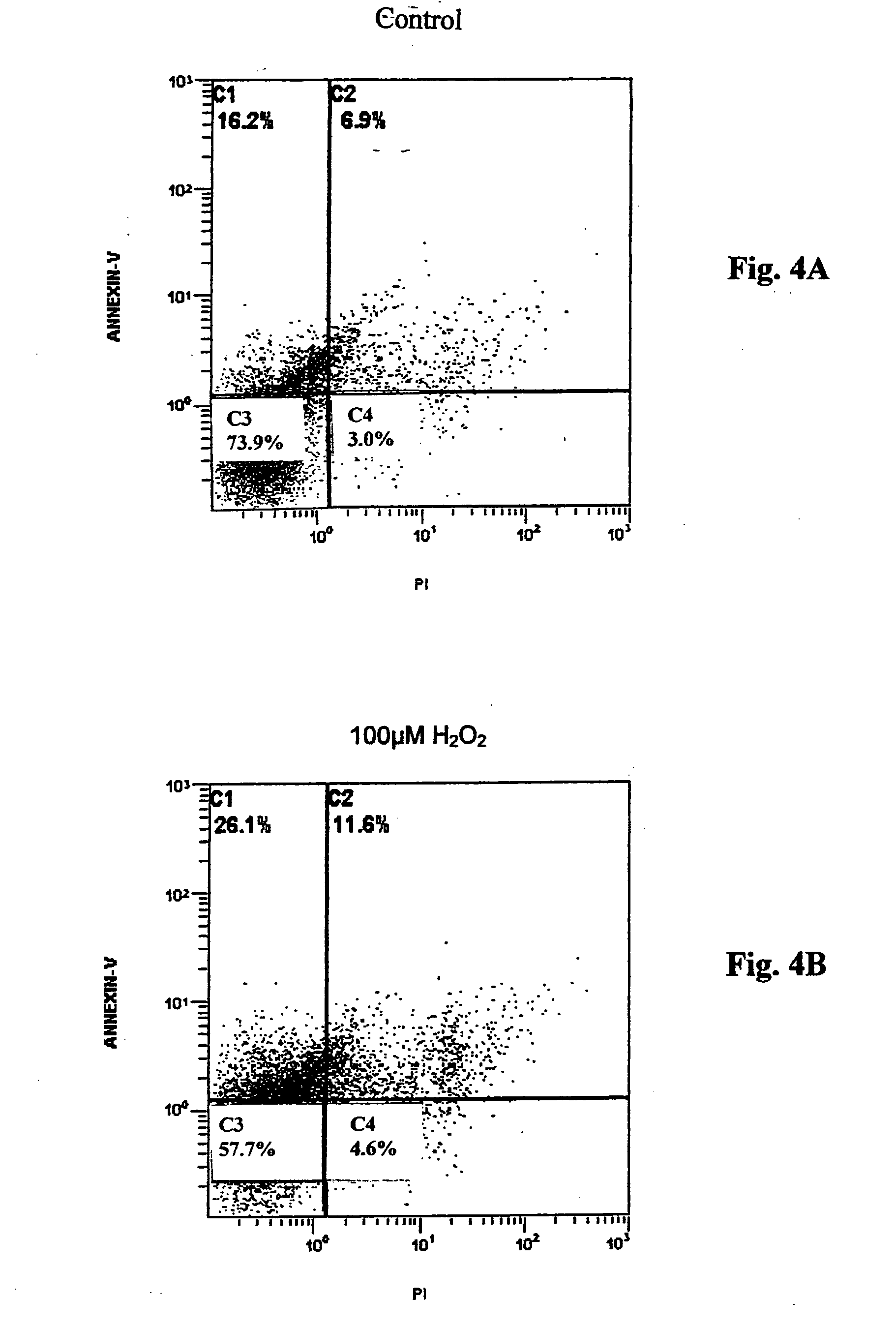Inhibition of reactive oxygen species and protection of mammalian cells
a technology of reactive oxygen species and mammalian cells, applied in the direction of biocide, heavy metal active ingredients, drug compositions, etc., can solve the problems of retinal degeneration, eventual outcome of blindness, and without satisfactory remedies, and achieve the effect of promoting the lifespan of retinal neurons
- Summary
- Abstract
- Description
- Claims
- Application Information
AI Technical Summary
Benefits of technology
Problems solved by technology
Method used
Image
Examples
example 1
[0050] A primary retinal neuron culture is obtained from albino rat pups. Retinae of Sprague-Dawley albino rat pups (0-2-day old) were dissected out and mechanically dissociated in 25 ml of DMEM / F12 medium. After being filtered through 230 μm and 140 μm sieves, the dissociated cells were centrifuged at 1200 rpm for 5 min. The cell pellets were re-suspended in the medium to 1×105 cells / ml. 1 ml of the cell suspension was plated in each well pre-treated with 10 μg / ml of poly-D-lysine. The cells were maintained in the medium until day 7, when different concentrations of CeO2 nanoparticles were added to the cultures. The timeline for the addition of CeO2 nanoparticles is shown in FIG. 1. The treated neuronal cells were harvested on day 14, day 19, day 24 and day 29 after the beginning of treatment on day 7. The percentage of apoptotic retinal neurons in the culture with and without 5 nM CeO2 nanoparticle treatment is shown in FIG. 2 at the 12th day, 14th day, 19th day, 24th day and 29th...
example 3
[0065] Intracelluar reactive oxygen species (ROS) production was measured in both CeO2 nanoparticle treated and control cells using 29,79-dichlorofluorescein diacetate (DCFH-DA, Sigma). Briefly, the retinal neurons were exposed to CeO2 nanoparticles with different concentrations and various incubation times. After incubation, the cells were incubated with 10 μM DCFH-DA (dissolved in dimethylsulfoxide (DMSO)) at 37° C. for 30 min. The cells then were incubated with 1 mM H2O2 at 37° C. for 30 min after the excess DCFH-DA was washed with PBS. The cells were harvested as described above. The intensity of fluorescence was detected by flow cytometry with the excitation filter of 485 nm. The ROS level was calculated as a ratio: ROS=mean intensity of treated cells divided by mean intensity of control cells.
[0066]FIG. 6 is an experimental paradigm showing the beginning of the CeO2 nanoparticle treatment on the 7th day and simultaneous incubation with H2O2 and DCFH-DA and a timeline of expos...
PUM
 Login to View More
Login to View More Abstract
Description
Claims
Application Information
 Login to View More
Login to View More - R&D
- Intellectual Property
- Life Sciences
- Materials
- Tech Scout
- Unparalleled Data Quality
- Higher Quality Content
- 60% Fewer Hallucinations
Browse by: Latest US Patents, China's latest patents, Technical Efficacy Thesaurus, Application Domain, Technology Topic, Popular Technical Reports.
© 2025 PatSnap. All rights reserved.Legal|Privacy policy|Modern Slavery Act Transparency Statement|Sitemap|About US| Contact US: help@patsnap.com



